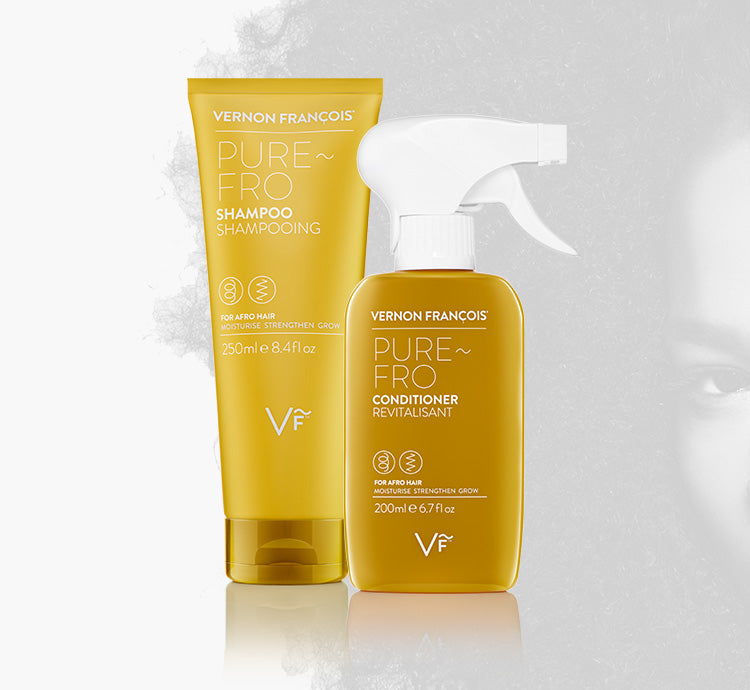COILY
Like tightly coiled springs

One of the most versatile, usually the least dense, of all hair types. Often quite fragile as fewer cuticle layers on the outside of the hair shaft than other curl patterns.
- A silk cap worn over the hair at night will help to preserve moisture within the strands.
- Pat hair dry with a cotton t-shirt or microfibre towel to help prevent breakage.
Kinky
Has kinks in it

Each strand of hair makes a zig zag shape; not a coil, winding curl or S. Can be perceived as being strong but often this hair type is quite delicate.
- Kinky hair can be dry because natural oil produced at the scalp has an indirect journey to the ends.
- Regular co-washing in-between sulfate-free shampooing will help to keep moisture levels up.
- Detangle with fingers or a wide tooth comb, instead of a hair brush, to minimise breakage.
Wavy
Varying degrees of S

The curl pattern that each strand of wavy hair makes, can range from loose and elongated to a clear S shape. Often craves moisture and hydration.
- Unless it’s dirty, wavy hair may need shampooing every two or three days.
- Tonging hair? Set to warm, not hot, which will help the shape to hold for longer.
- Ask your stylist if hair needs a trim every time it’s colored, to avoid over-processing the ends.
Straight
Often naturally quite strong

Straight hair can have a high sheen if it is healthy. This is because oils in the scalp can travel without restriction along the length, or shaft, of the hair.
- Has a sheen when it’s healthy but may expose split ends easily, regular trims are recommended.
- Drying hair upside down, moving the dryer in a circular motion, will help to encourage volume.
- Lightweight Styling Serum can help to minimise the appearance of split ends.
Curly
Strands wind around themselves

The intensity of curl pattern is determined at the root of the hair. Can range from curls that are bigger and looser, to those with a corkscrew or spiral shape.
- Curly hair needs plenty of moisture to help minimise frizz and encourage a defined curl pattern.
- A wide tooth comb will help to keep curls formed versus a brush which may break it up.
- Twist and pin hair before bed, cover with a silk cap overnight, gently unravel in the morning.
Damaged
Needs extra special care

Usually results from over styling, misused heat or chemical treatments. This hair type needs nurturing with informed product choices plus mindful application, drying and styling techniques.
- Heat styling, colouring or chemical processing can damage all hair types, so minimize further heat drying and styling on already damaged hair.
- Hair damage can be treated, reversed, and strands protected from further damage with the natural oils and restorative ingredients found in the RE~VAMP™ range.




























